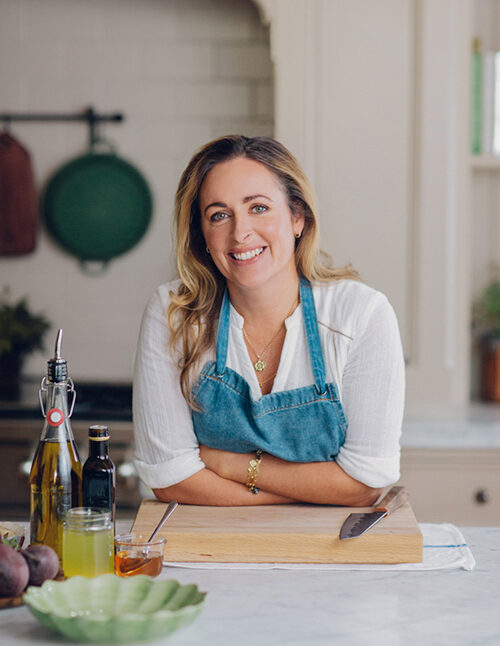
Serves 8-10
Slow-Roasted Turkey
It’s very handy to have a good roast turkey recipe for those special occasions that call for a celebratory meal. I have been cooking mine like this for a couple of years and I must admit that am a bit of a convert.
My top timing tip, especially if you don’t have masses of oven space, is to aim to have your turkey coming out of the oven to rest at least 1-1.5 hours before you eat. This might sound a long time, but the bird will stay warm if you wrap it in foil with a couple of tea-towels over the top. This then frees up your oven to roast the veggies at a higher temperature than the bird needed to cook at. So long as you ensure the gravy, plates and other parts of the meal are hot, nobody will notice in the slightest that the turkey is merely warm.
My second tip is to use a meat thermometer. It is absolutely worth buying one of these as it makes turkey cooking infinitely less worrisome (and you are also less likely to overcook your expensive bird). The reassurance that comes from knowing that the bird is well cooked through means we can be more responsive to what’s actually in front of us, rather than what’s been written on a page.
INGREDIENTS
- 3 onions, peeled and halved
- 1 whole bulb garlic, halved
- 3 large carrots, scrubbed
- 1 Bronze turkey, 4.5-5.5kg
- Olive oil
- 200ml vegetable stock
STEP BY STEP
Remove all the racks in your oven, except for one placed on the lowest position (although not directly on the oven floor).
Pre-heat the oven to 220°C.
Check there are no innards to remove from your turkey (sometimes they’re wrapped in plastic inside the cavity). You don’t want to roast these!
Next, arrange a ‘bed’ of the onions, carrots & garlic on the base of your largest roasting pan
Then place the bird breast side DOWN on top of these vegetables. Tuck the wings underneath the bird, so they don’t burn. Then drizzle liberally with olive oil. Add 250ml vegetable stock into the bottom of the pan to surround the vegetables (but not over the bird itself or you’ll wash off the oil).
Place the tray into the oven and cook at 220°C for 30 minutes, then turn the oven down to 160°C for a further 1.5 hours. Resist the temptation to open the oven door if you can possibly manage it, as the steam created by the water in the base of the pan will help to keep the turkey moist.
If however, it is starting to look too brown at any point, add a loose covering of foil over the top of the bird and then place it back into the oven.
After the 2 hours of cooking time is completed, you’ll need to flip the bird over so it’s breast side up. The easiest way to do this is using some silicon oven mitts or large turkey forks.
Once it has been turned right-side up, place the turkey back into the oven for a further 45-60 minutes, or until a meat thermometer, placed into the thickest part of the thigh (but not touching a bone) reads a minimum of 72°C.
When cooked, remove the turkey from the oven, cover loosely with foil & a couple of tea towels and allow to rest for at least 30 minutes (and up to 1.5 hours) before carving and serving.
Tip: You can strain the pan juices from cooking the turkey into a small saucepan through a sieve and reduce these down with a splash of white wine until thickened into a jus. Season to taste before serving. My top tip is to add half a teaspoon or so of marmite to my gravy, too. It adds an extra boost of flavour.
MORE TO EXPLORE
Please note: Although we do our best to ensure that recipes are correctly tagged according to ingredients, potential benefit, dietary requirements, type of dish or other filter, this is a manual process and errors may occur. Please therefore take care to thoroughly review the listed ingredients and method before commencing cooking to ensure none of the ingredients or methods given may cause adverse effects to anyone consuming the food. We do not provide any assurances nor accept any responsibility or liablity with regard to the originality, efficacy, quality or safety of recipes or articles.
This website uses some carefully selected affiliate links. If you buy through these links, we may earn an affiliate commission, at no additional cost to you. This helps to keep all of our online content free for everyone to access. Thank you for your support as every little helps.




